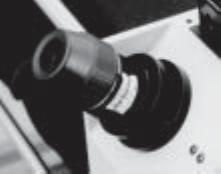
19
Mirror Fan
The mirror fan speeds up the cooling or warming of the primary mirror
when the Teleport has been stored in warmer or colder conditions.
While changing temperature, the mirror will distort, reducing image
quality. If you wish to observe right away, switch the fan on when you
set up the scope. If the temperature change is very small or you won’t
observe until much later, leave it off. The fan will actually increase the
amount of mirror distortion at first, since it increases its rate of tem-
perature change. The benefit is that it approaches final temperature
and full image quality in less time. Turn the fan off once the mirror is
stabilized, usually a quarter to a half hour but possibly longer with
large changes in temperature. If a sudden change in temperature
occurs while observing, the fan may be used again as needed.
Secondary Heat
Atmospheric conditions will often cause dew to form on surfaces at
night, especially those able to radiate their heat toward the dark sky. If
this seems imminent, switch the secondary heat on before dew begins
to form. Once significant dew has formed on the secondary, consider-
able time may be needed to remove it. Under light dew conditions,
operate the heater only part time to conserve the batteries. A red LED
in the spider hub indicates when the heater is on.
Eyepiece Heater
Dew may also form on eyepieces or on the
finder beam plate. A Kendrick eyepiece heater
may be wrapped snugly around the eyepiece
(Fig 27), moving it part time to the finder if
needed. (The finder element may also be
wiped gently with tissue if needed. It is not an
expensive optical surface like the secondary
mirror or eyepiece.)
The eyepiece heater is on when it is plugged
in, so do not leave it plugged in when not
needed (its power draw is much higher than the secondary heater or
fan.) If dewing is heavy and you are using more than one eyepiece, it
may help to keep those not in use in your pocket (31mm Naglers may
not fit).
Fig 27: heating the
eyepiece


















